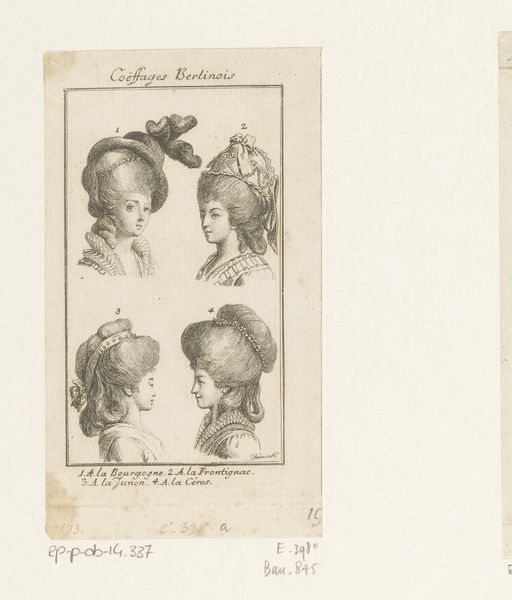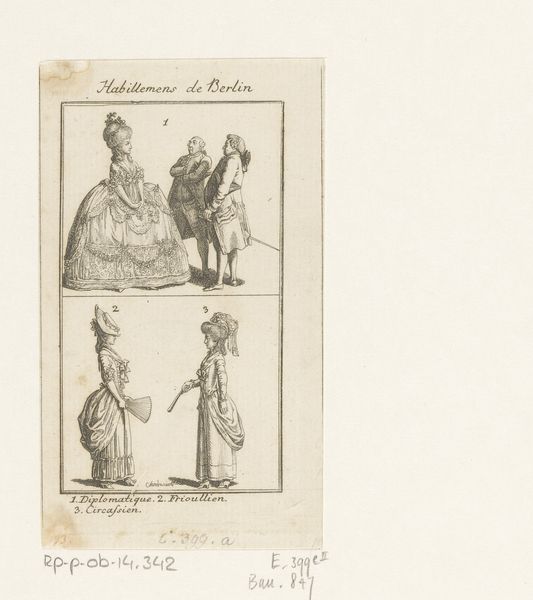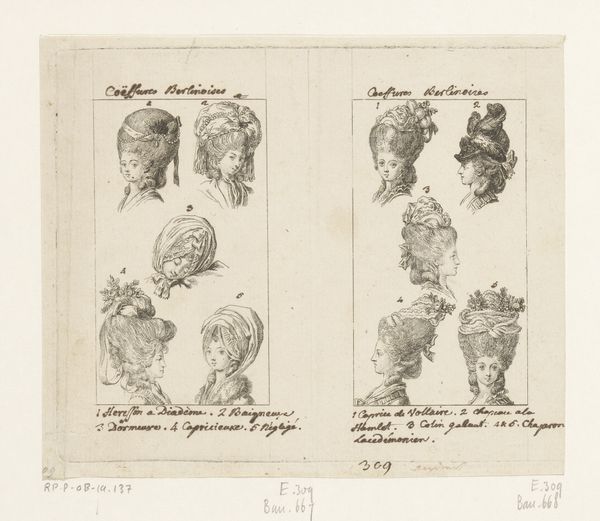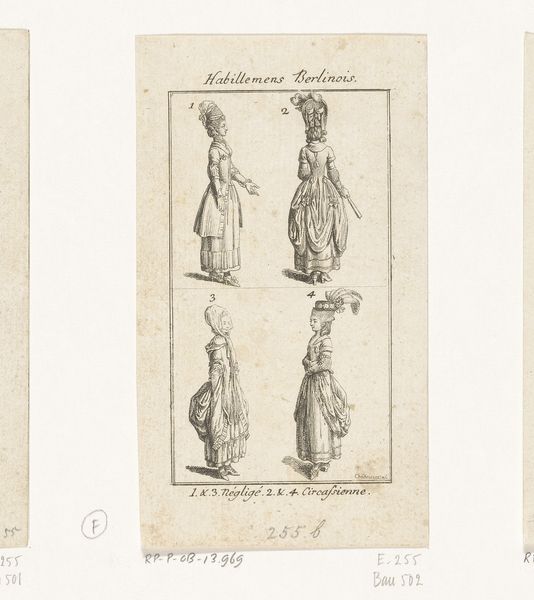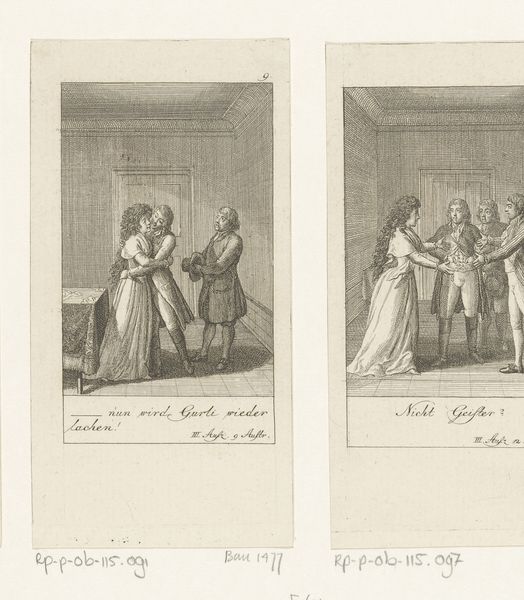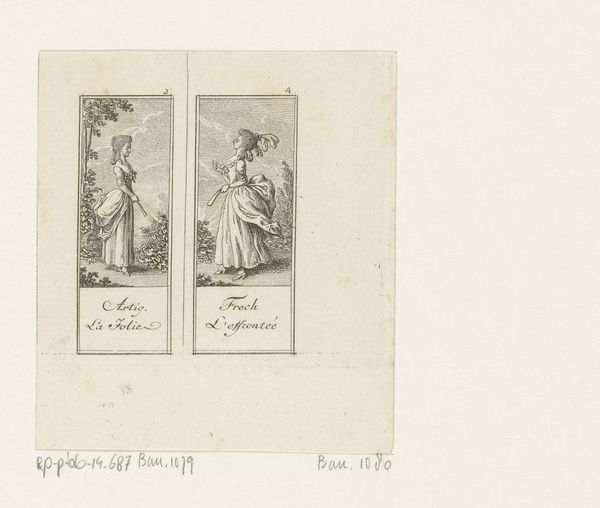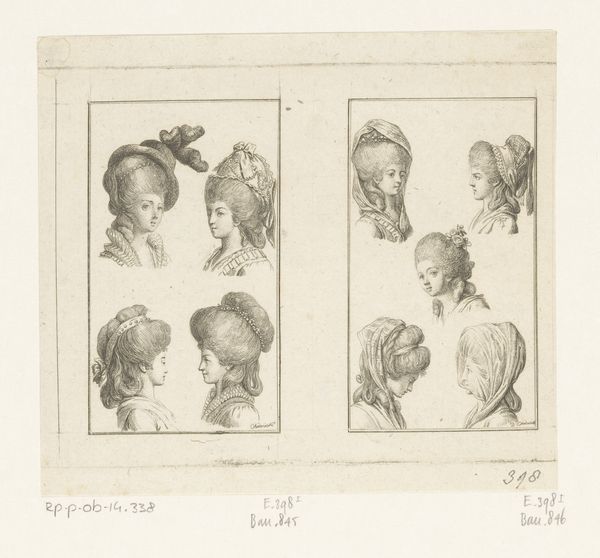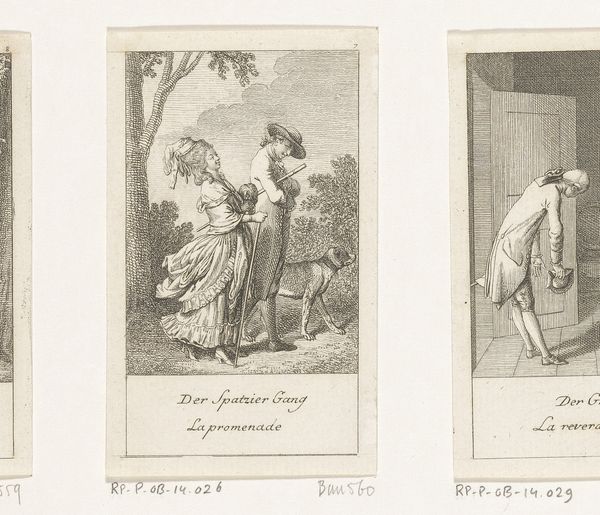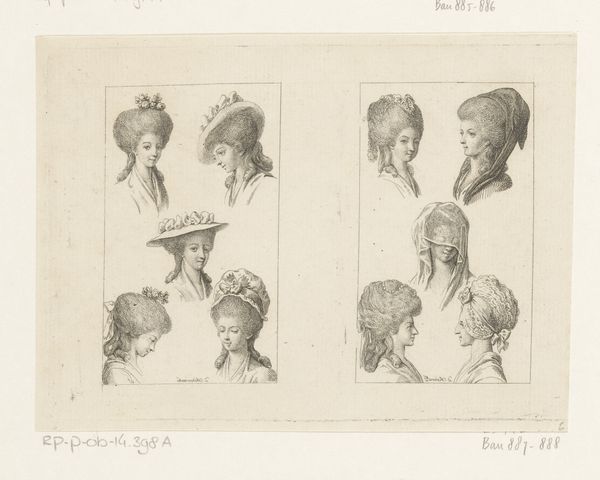
Dimensions: height 117 mm, width 66 mm
Copyright: Rijks Museum: Open Domain
Editor: This is "Kapsels en hoofddeksels voor dames," or "Hairstyles and Head Coverings for Ladies," by Daniel Nikolaus Chodowiecki, created in 1781. It’s an engraving, so lines are very important. The variety of hairstyles is quite captivating, like a fashion plate. How do you interpret the visual language of this print? Curator: Immediately, the array of hairstyles tells me something about identity and social role in 18th-century Berlin. Hair, particularly among women, functioned as a powerful signifier. Do you notice any recurring motifs? Perhaps the height, or the coverings? Editor: The height is remarkable, and the head coverings definitely signal different statuses. Number 5 looks almost monastic, in comparison. It makes you wonder what the practical considerations were—like, how did they even fit through doorways? Curator: Exactly. Consider also that hairstyles are not just about aesthetics. They're carriers of memory. What stories might be woven into the intricate styles we see here? Each fold, each flower might speak to a specific event or allegiance. The symbolic weight is palpable. Editor: So, reading these images isn't just about fashion, but understanding the encoding of social narratives? Curator: Precisely. It’s about unpicking the cultural DNA embedded in visual form, recognizing the emotional and societal significance attached to each meticulously crafted coiffure. Chodowiecki is giving us a glimpse into the language of status. Editor: I hadn't considered how much hair could communicate. It's like a very visual social register! Curator: Indeed. Visual elements carry deep meaning when viewed through a lens of social and cultural understanding, revealing that the cultural meanings are deeply embedded and continue to speak across time.
Comments
No comments
Be the first to comment and join the conversation on the ultimate creative platform.
